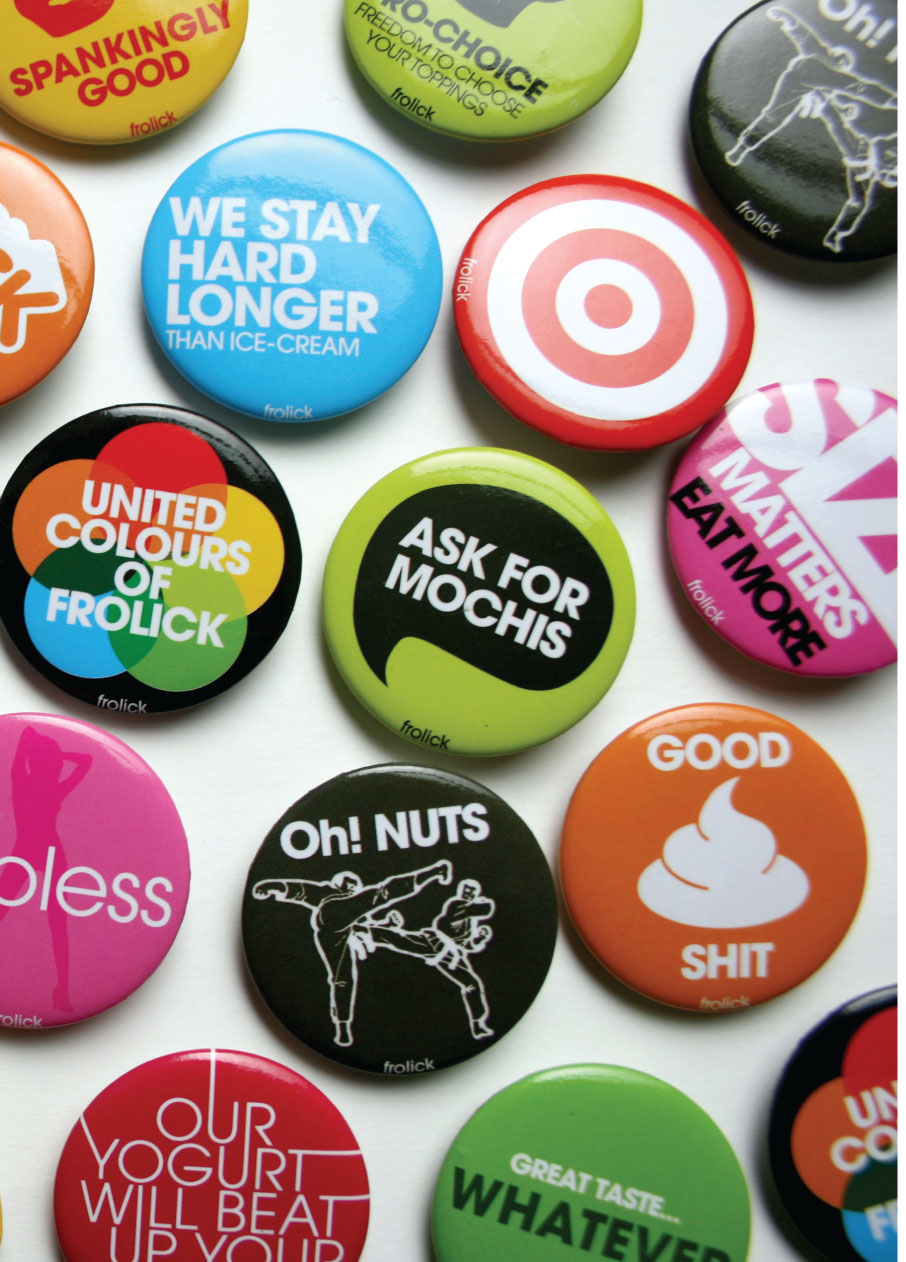
Frolick identity (2008) by Asylum
Since British advertising agencies brought modern graphic design into Singapore after the Second World War, a thriving community of independent studios has emerged in this former colony in Southeast Asia. Today, Singapore is a modern metropolis set to celebrate fifty years of independence in 2015, but the nation-state is still struggling to create a distinct local identity while earning global recognition — just like its contemporary graphic design scene.
Two separate exhibitions held by Singapore’s top graphic designers in the 1990s and 2000s show how the profession had changed within a decade in the city-state. In 1994, Su Yeang paid her own way to hold “Breaking Barriers” in The Design Centre, an exhibition of Su Yeang Design’s work to educate the public and businesses on the importance of good design. It reflected a time when graphic design was seen as a problem-solving tool for businesses. Fast forward to 2005, :phunk Studio held “A Decade of Decadence”, a retrospective exhibition of their “Greatest Hits”. Besides the influence of music, this exhibition held in the Singapore History Museum was supported by entertainment establishments Zouk and MTV, as well as Tiger Beer. As William Chan of :phunk then said: “When we started, people thought all graphic designers could do were design ‘Big Sale’ flyers and lay out text on posters. But these days, we are viewed as trend-setters.”
:phunk, formed in 1995 by four LaSalle design students — Jackson Tan, Alvin Tan, Melvin Chee, and William Chan — represented a new generation of Singapore graphic design studios. Their founders grew up as young adults in the late ‘80s and early ‘90s, when Singapore opened up to the world’s pop culture from both the East and West, bringing in DC and Marvel comics, Hong Kong’s kungfu man hua, and most importantly, music.
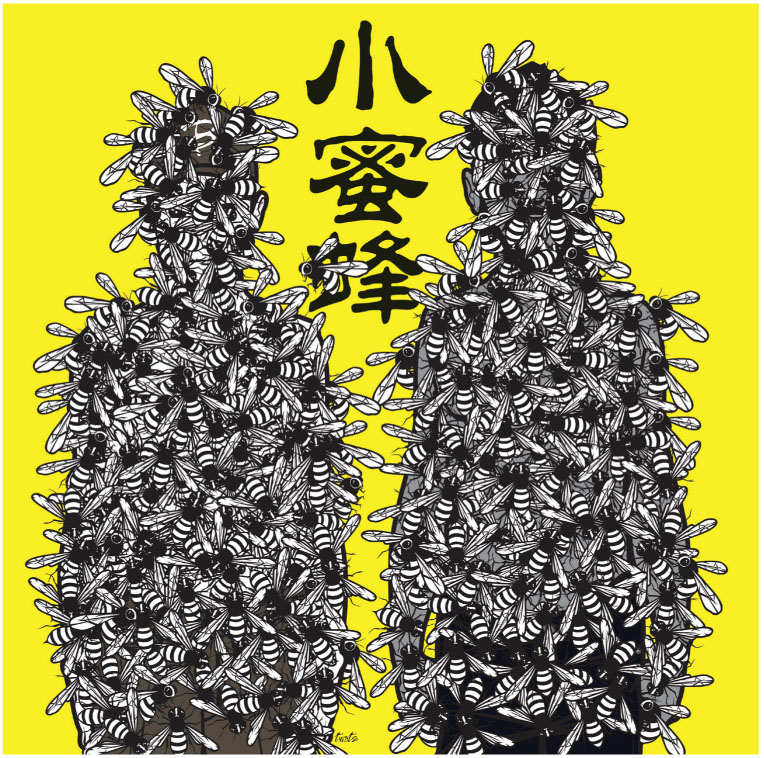
'The Bees' cover for Creative Review magazine (2004) by :phunk studio
This entire generation learnt about design through music. While listening to cutting edge bands of the times such as New Order, Joy Division, Cocteau Twins and the Pixies that were launched by British labels including 4AD and Factory Records, they fell in love with the accompanying avant-garde record and compact disc cover sleeves designed by the likes of Peter Saville and Vaughan Oliver. They read music magazines such as The Face and Ray Gun, feeding on a visual diet of publication designs by Neville Brody and David Carson respectively. These young designers wanted to design like their overseas idols — such as Carson, Saville, Tomato or The Designers Republic — using graphic design as more than just a tool of business but also as an outlet for personal expression. Little Ong, who started fFurious in 1999 out of his bedroom, was very influenced by Carson and Ray Gun magazine. “I think it was the attitude, we didn’t give a shit and we could do whatever we wanted! We love to be independent!” he said. “A lot of people realised that anyone can get involved in graphics and start receiving some of the same sort of attention.”
While earlier Singapore design studios proved the commercial viability of being independent, they were seen as faceless corporations as compared to the foreign designers that this new generation admired. Chris Lee left a successful career in multinational advertising agencies to start Asylum in 1999. Besides regular clients, he wanted his studio to work with small clients who had interesting projects, such as local arts groups that would usually not be able to afford the fees of large agencies. “The generation before was more commercial. They didn’t have a personality, they were respectable, more professional,” he explains. “We wanted more of our personalities in our work; it’s about what we love.”
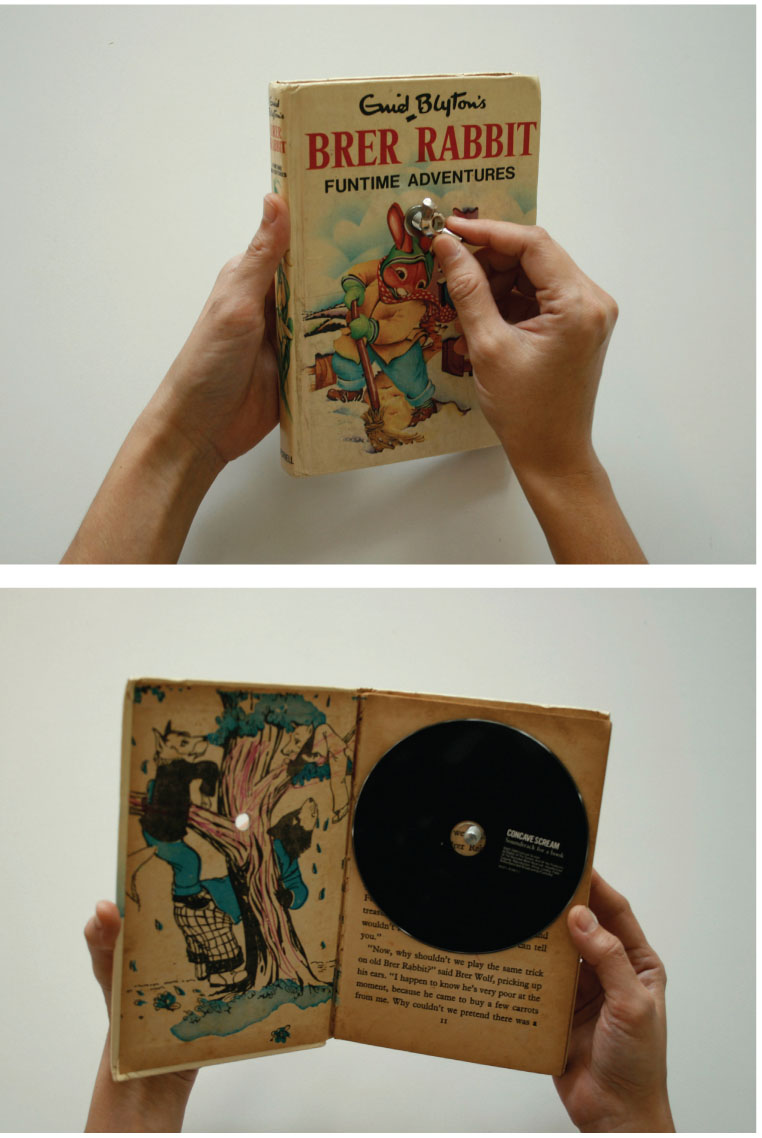
'Soundtrack for a Book' album for Concave Scream (2009) by Kinetic Design
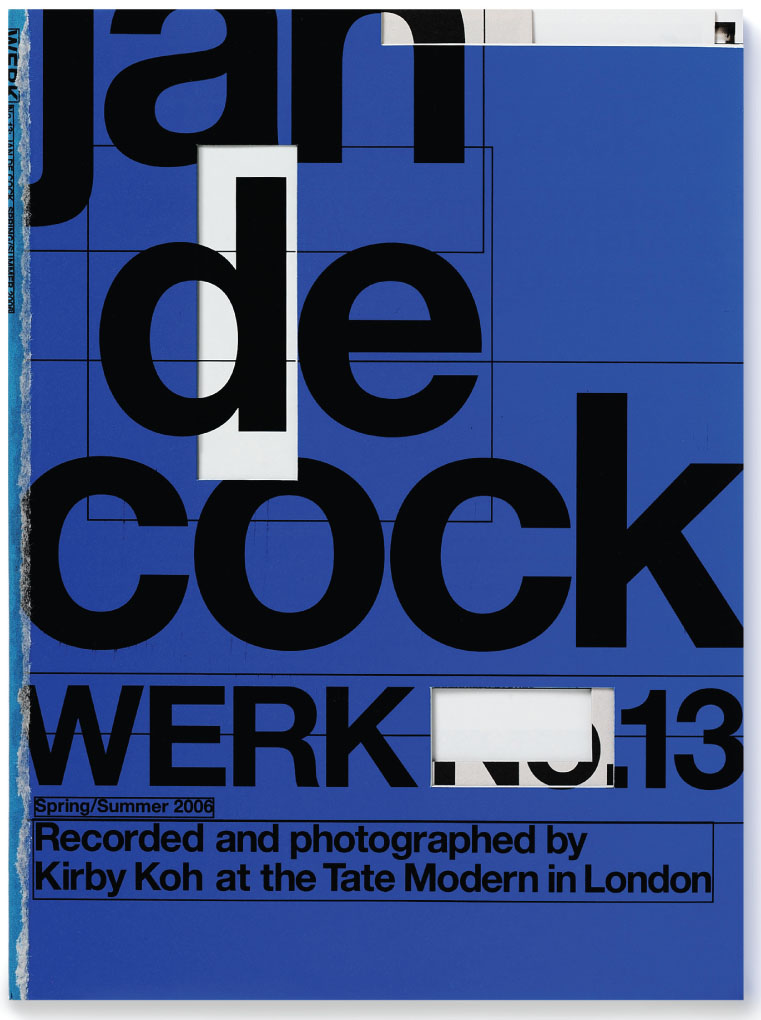
WERK magazine (2006) by WORK
Today’s designers in Singapore cherish having their own voice, which is evident in the diversity of studios with different design styles, specialisations and approaches. While older designers believe it is important to keep their voices out of their designs and cater to all kinds of clients, many of this generation of designers want to have a say in their designs, developing their own visual languages to sell to select clients instead.
For instance, :phunk studio is known for its youth-centric illustrations that incorporate both elements from the East and West. On the other hand, Asylum’s work is seen as corporate chic with an off-beat touch. Then there is the experimental WORK that handles mainly fashion clients, versus Epigram, better known for its annual reports with a strong story-telling concept. And while H55 is known for its minimal modernist output, Kinetic Design tends to create more irreverent work. Apart from design philosophies, the studios also differ in specialisations, be it designing publications, exhibitions, websites, or others. Many of these studios stay small, sometimes with just one or two people, so that its founders can retain creative control and remain personally involved.
Going Global, Staying Local
While these young designers began making waves internationally thanks to the Internet and winning international design awards from Tokyo Type Directors Club, New York Art Directors Club, The One Show, and the Design & Art Direction (D&AD) in the early 2000s, they remained unknown in Singapore. But the spotlight would shine on them soon. After the recession, the government reviewed its economic policies again, and in 2003, it set out to embrace globalisation, have a diversified economy, and to be a “creative and entrepreneurial nation.”
Design was again regarded as important to help Singapore get its economy back on track. However, it would not remain as an ancillary industry to help Made-in-Singapore exports attractive like in the past. Instead, design was seen together with the media and the arts as the “creative industries”, a new growth sector for Singapore. This was in line with how other developed countries such as the US, the UK, Japan and South Korea regarded design — as an economic growth engine in itself. Design was also vital to creating a vibrant global city to attract talent from around the world.
To push this new agenda, a national agency to promote design, the DesignSingapore Council was set up in 2003. Unlike the government’s previous design promotion agencies that came under the trade ministry, DesignSingapore was part of the Ministry of Information, Communications and the Arts (MICA), a move championed by its late founding chairman Dr. Milton Tan. He saw the importance of the arts and culture as part of a healthy design strategy, and officially acknowledged the role of culture in nurturing a creative design scene. Only a few years prior, the National Arts Council — another agency under MICA — had launched the “Renaissance City Plan” in 1999. This policy envisioned Singapore as a global arts city with a cultural identity of its own, building upon the governments’ efforts a decade earlier to take the arts and culture seriously. It was under such a supportive climate that graphic designers found new opportunities in a blossoming arts and cultural scene, allowing them to work with music bands, theatre companies, festivals, museums and art institutions — engaging other cultural producers just like their idols in the UK and the US.

BigO magazine cover (2000) by fFurious
The creation of a cultural environment here in the last two decades, and the rise of an increasing design-conscious society has given more room and scope for Singapore’s designers to explore and experiment with new forms. While Singapore design has traditionally been described as “international”, “western”, and “trendy” — a reflection of the profession’s history here — a new Singapore design is emerging. Just like in the more advanced creative industries of the UK, the US and Japan that have a design culture and identity of their own, so might Singapore one day.
But the development of a Singapore design culture and identity continues to be tempered by globalisation. A design studio founded in Singapore today is deeply rooted in a global network. Bravo Company, co-founded by Edwin Tan and Janice Teo in 2010, not only has a website, but is also on social media platforms such as Twitter, Facebook and Behance, so that they can communicate to and connect with a worldwide audience. Clients are also deeply aware of the need to appeal to a larger market out of this small city-state to survive. Explains Chua Keng Leong of Blue Beetle: “Most clients don’t want to be seen as a Singapore company, they want to look international. It’s not that they are not proud of Singapore, but they want a local company to look credible by using an international design.”
Even the Singapore design community today has become increasingly cosmopolitan. Not only have multinational design companies continued to set up base here, such as NiCE and Anthem Worldwide, overseas designers have based themselves here and started independent studios, such as Chemistry, Qube and Zebra. Dutch designer Albert Leeflang first came to Singapore in 1997 and ended up working in a multinational design studio. After working for close to ten years here and in Malaysia and Indonesia, he set up his own studio LSD Corporation in 2006. He wanted to work for himself now and was also encouraged by how design had grown in Singapore.
“In 1997, coming from Holland especially, graphic design had no real presence here,” he says. “There is a complete ‘new’ design landscape, which is more independent, more local and very good.” Besides coming here to do design, more foreigners from the region are also flocking to Singapore to learn design in the growing number of design schools. Established design institutions like Temasek Design School, Nanyang Academy of Fine Arts, and LASALLE College of the Arts are now joined by private ones like First Media Design School, Raffles Design Institute and Orita Sinclair School of Design, New Media and The Arts.

World Trade Organisation logo (1996) by Su Yeang
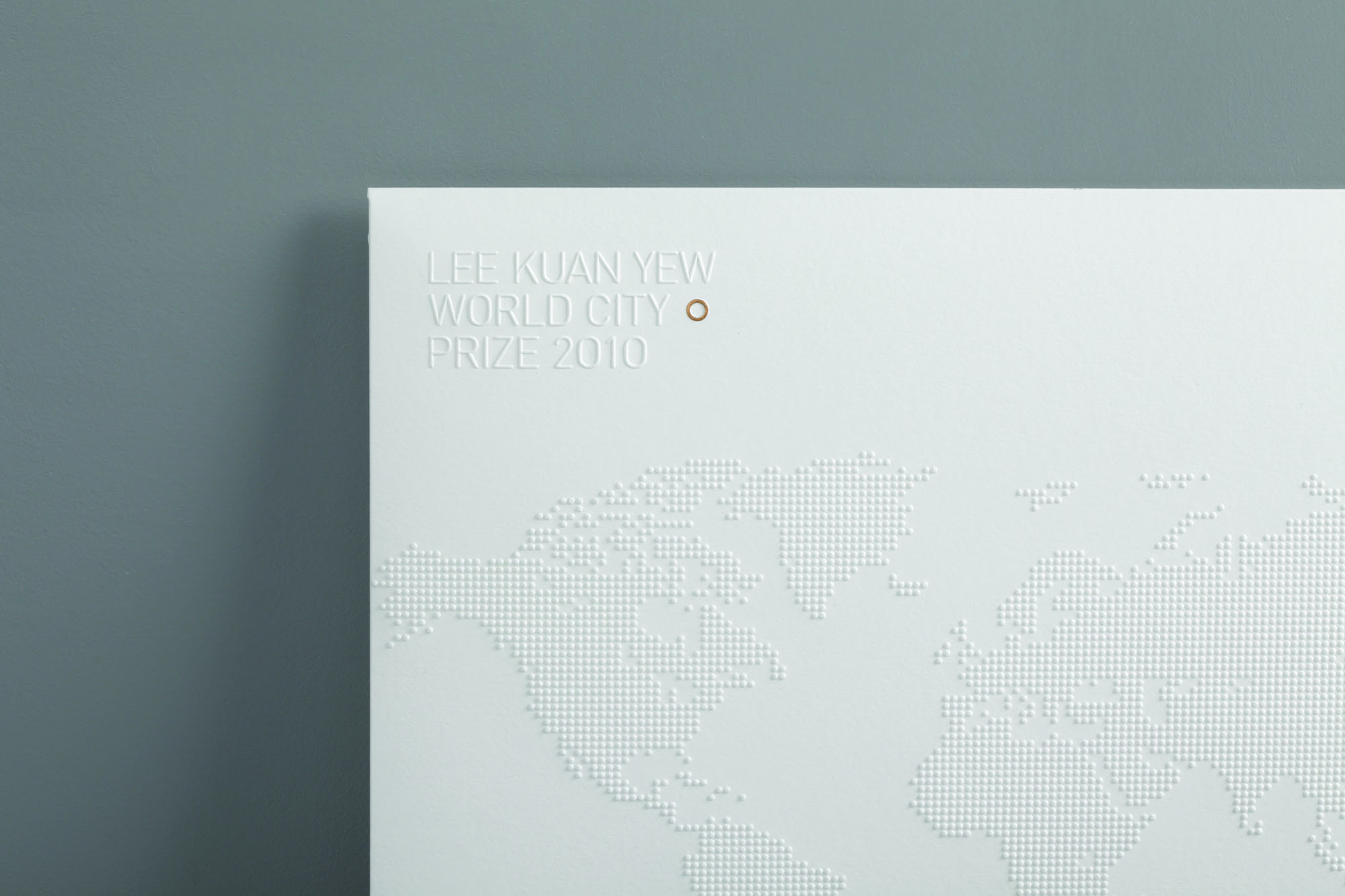
Lee Kuan Yew World City Prize Identity (2009) by H55
Such a multicultural environment poses a challenge for a singular design identity to emerge in Singapore, a problem that has “neutralised” design here. “Singapore’s East-West, Chinese, Malay, Indian, and Others mix actually makes it difficult,” says Alex Mucha of Equus. “In our work, we often have to be careful not to give too much of any one influence.” But for other designers, this open environment is what makes Singapore an attractive place to practice. Ball, who is now creative director of Anthem Worldwide, says there is no need to search for a cultural identity, as no one outside of Singapore would be concerned. “The future of Singapore’s design industry is to be part of a global network. Don’t worry about the past and concentrate on getting to a world standard, making sure the creativity is there, and pushing the boundaries,” he says. “You’ve got an eye on both sides of the world. That is the biggest strength, you can communicate with both East and West.”
Many have pointed to the work of :phunk studio, with its Asian narratives fused with Western digital art forms, as a good example of this strength. For :phunk, Singapore’s lack of history and culture has provided a “blank canvas” for them to project their personal visions, “I think it’s our own history that shapes our work.”
Without a precedent and little history or culture to hold them down, it’s entirely up to the Singapore designer today to decide if he or she wants to follow global trends, forge a national identity, or do something else altogether.

Independence book (2012) by H55
This essay is adapted from INDEPENDENCE: The history of graphic design in Singapore since the 1960s, which was published in 2012 by The Design Society.
